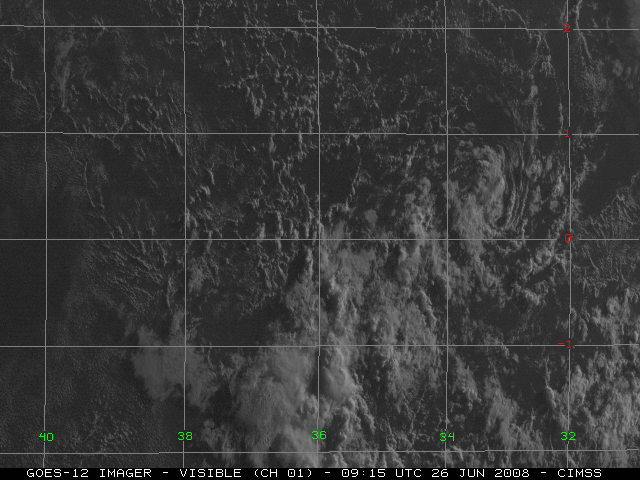A tropical disturbance has crossed the equator. One such disturbance occurred June 27, 2008 in the Atlantic basin (south to north) that retained its clockwise motion for some time:

But antibaric gradient wind is still a stable flow. See for example James R. Holton and Gregory J. Hakim, Dynamic Meteorology Fifth Edition Section 3.2.5 on pp. 74-77.
In baric gradient flow the Coriolis and centrifugal forces acting outwards balance the pressure-gradient force acting inwards.
In antibaric flow the centrifugal force acting outwards balances the pressure gradient and Coriolis forces acting inwards.
Thus for a given pressure gradient and radius of curvature of the isobars, the centrifugal force must be stronger, and hence the wind speed higher, for an antibaric tropical cyclone than for a baric one.
This does not mean that a tropical cyclone must intensify if it crosses the equator. Whether baric or anitbaric, its intensity is determined by the available energy or exergy corresponding to the sea-surface and tropopause temperatures (with possible deductions for wind shear, entrainment of dry air, land interaction, etc.)
The First and Second Laws of Thermodynamics require that the pressure gradient and radius of curvature of the isobars must adjust to the exergy supply --- not vice versa.
According to Holton and Hakim, an antibaric (synoptic-scale) hurricane can easily exist if it is centered say only a few degrees from the Equator in the opposite hemisphere, but this becomes more and more difficult and hence more and more unlikely with increasing latitude in the opposite hemisphere.
Whether at some latitude in the opposite hemisphere it becomes absolutely impossible may be an open question.
Small-scale antibaric cyclones (dust devils, whirlpools, waterspouts, and to a lesser extent tornadoes) can easily exist at any any latitude where sufficient exergy exists to generate and maintain them.